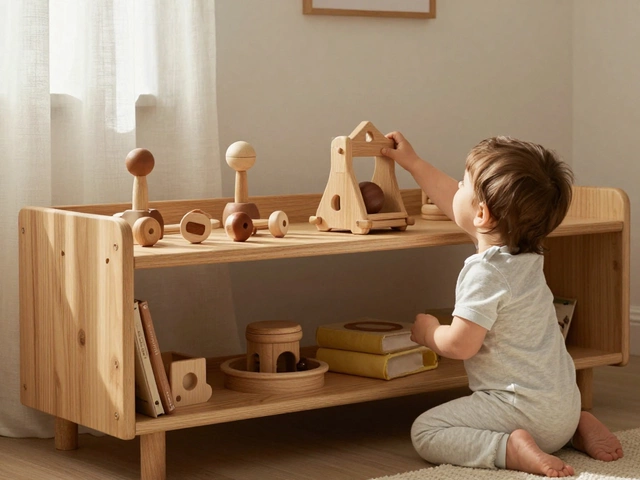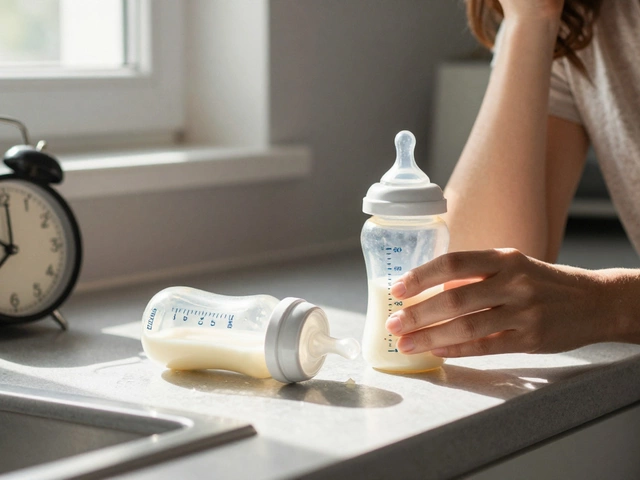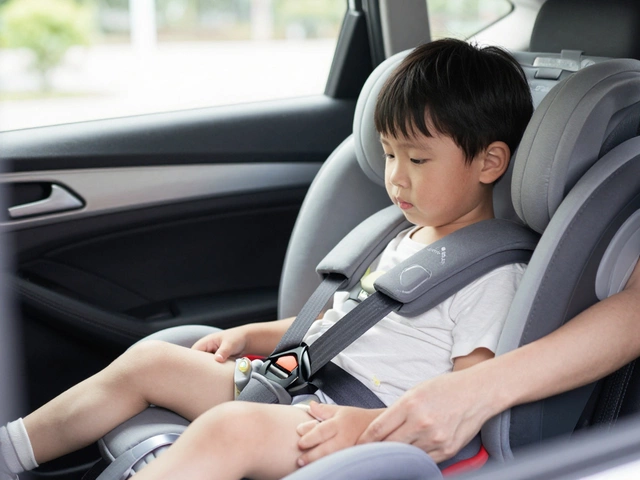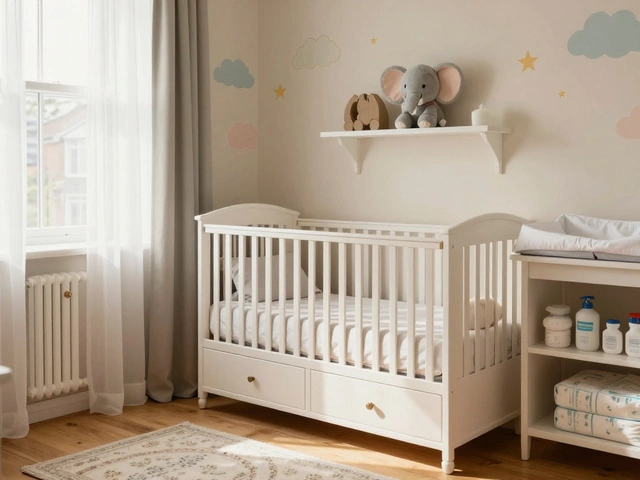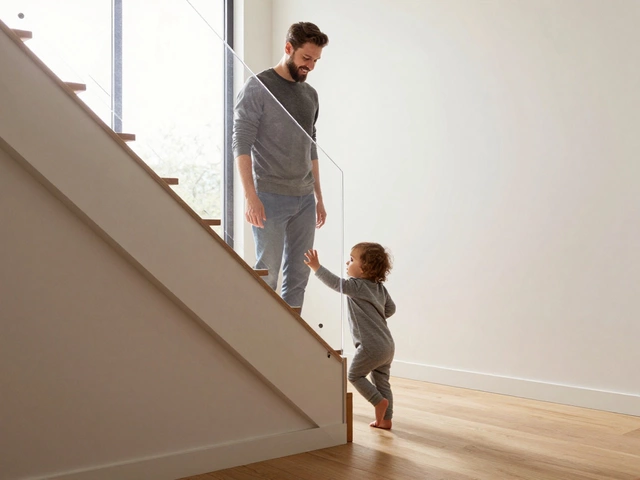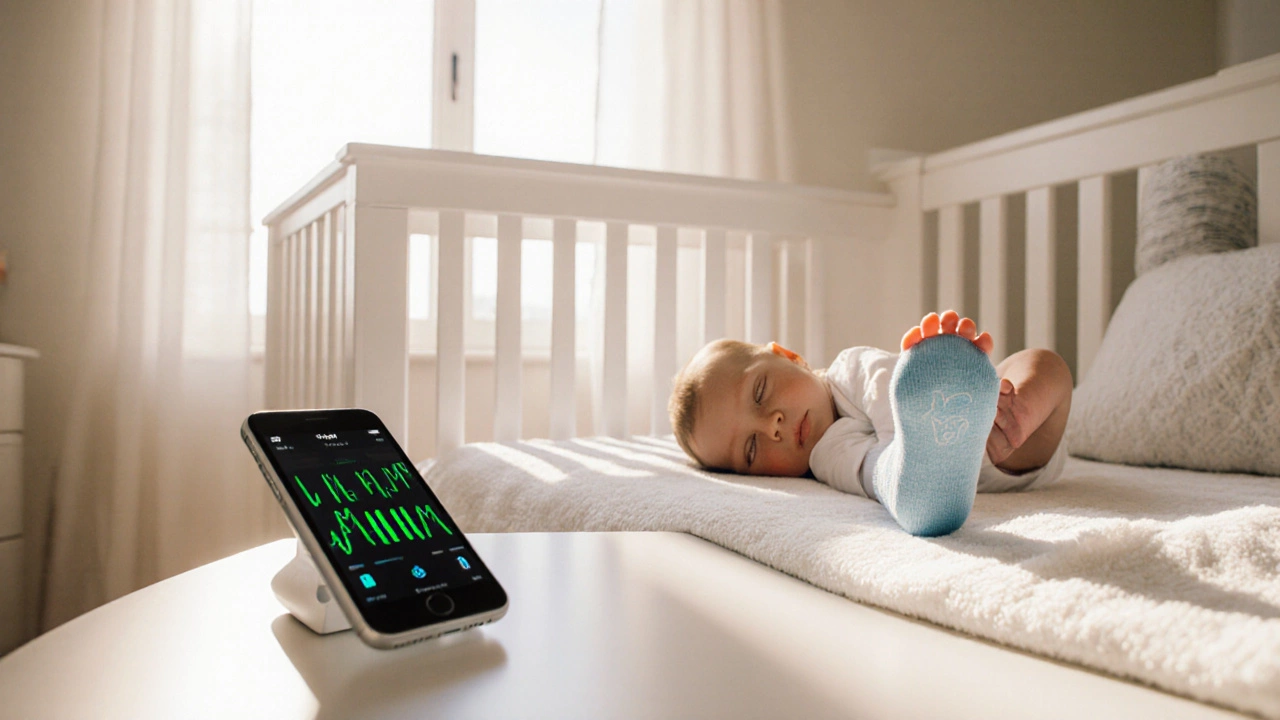
RF Exposure Calculator for Baby Monitors
Calculate RF Exposure
This tool estimates relative radiofrequency exposure from baby monitors based on distance from the crib. Note: RF exposure is measured in power density (mW/cm²) and decreases rapidly with distance.
For comparison: The FDA's limit for general public exposure is 1.0 mW/cm². The Owlet monitor emits very low power (about 0.01-0.1 mW/cm² at 1 meter).
Results
Estimated Exposure: Enter distance to calculate
Risk Level: Enter distance to calculate
Parents love gadgets that promise a better night's sleep, but when a popular device like the Owlet baby monitor sparks worry among doctors, it’s worth digging into the details. Below we break down what the monitor does, why many pediatricians raise red flags, and how you can keep your baby safe while still using modern tech.
What is the Owlet Baby Monitor?
Owlet is a wearable baby monitor that tracks a baby's heart rate and oxygen levels using pulse oximetry and sends alerts to a parent’s smartphone. The system consists of a soft sock that houses a tiny sensor, a base station that receives the data, and a mobile app that displays real‑time readings. Owlet markets itself as a safety net that can catch early signs of breathing trouble or sudden drops in oxygen.
How Does Owlet Work?
The core technology is a Pulse oximeter-the same type of sensor used in hospitals to measure blood oxygen saturation (SpO₂) and heart rate. The sensor shines a red and infrared light through the baby’s foot, reads the reflected light, and calculates the metrics in seconds. Data travels from the sock to the base via a low‑energy Bluetooth link, then hops to the parent’s phone over Wi‑Fi.
Why Pediatricians Are Cautious
Several concerns keep pediatricians from giving Owlet a blanket endorsement:
- Radiofrequency (RF) exposure: The device constantly emits Bluetooth and Wi‑Fi signals. While the power is low, the cumulative exposure for a newborn-especially when the monitor sits in the crib-has sparked debate. Radiofrequency radiation is classified by the WHO as possibly carcinogenic, and some pediatricians prefer to minimize any unnecessary RF sources near infants.
- False alarms and anxiety: The monitor can trigger alerts for brief, harmless fluctuations. Frequent beeps may cause parental stress and even lead to unnecessary trips to the emergency department.
- Medical‑device regulation: Owlet is marketed as a wellness product, not a medical device. This means it is not subject to the same rigorous FDA testing required for clinical pulse oximeters. The FDA has issued statements reminding consumers that hobby‑grade monitors are not substitutes for professional medical care.
- Data privacy: The app collects health‑related data and stores it in the cloud. Pediatricians worry about the security of that data and the potential for breaches.
- SIDS guidelines: The American Academy of Pediatrics (AAP) recommends a safe sleep environment-firm surface, no loose bedding, and the baby placed on its back. Adding a sock with electronics could interfere with these guidelines if the sensor shifts or becomes uncomfortable.
What the Research Says
Studies on RF exposure in infants are limited, but a 2023 review in the Journal of Pediatrics found no conclusive link between low‑power Bluetooth and adverse outcomes. However, the authors cautioned that long‑term data is lacking and suggested erring on the side of caution for newborns.
Accuracy is another hot topic. A 2022 trial comparing Owlet’s readings to hospital‑grade pulse oximeters showed a mean difference of 3% in SpO₂ values, which is within FDA limits for medical devices but could be significant for a parent making a quick decision.
Official Stances from Health Authorities
The FDA classifies wearable infant monitors as "low‑risk" but explicitly states they are not intended to diagnose or treat medical conditions. Meanwhile, the American Academy of Pediatrics advises parents to use monitors as supplemental tools, not replacements for safe‑sleep practices or regular check‑ups.
In Canada, Health Canada issued a consumer advisory in 2024 reminding families that devices like Owlet should be used only under a pediatrician’s guidance.
Practical Safety Checklist for Parents
- Check the distance: Keep the base station at least 3feet away from the crib to reduce RF exposure.
- Test the sensor: Ensure the sock fits snugly but isn’t too tight. Replace the sensor if the baby shows signs of irritation.
- Turn off Wi‑Fi at night: If your router supports a “night mode,” enable it to cut unnecessary transmissions while the baby sleeps.
- Update firmware: Regularly install app updates-many address security patches and improve alarm algorithms.
- Use it as a supplement: Pair Owlet with a standard audio/video monitor rather than relying solely on the wearable data.
- Consult your pediatrician: Bring your monitor’s data to routine visits; the doctor can help interpret any trends.
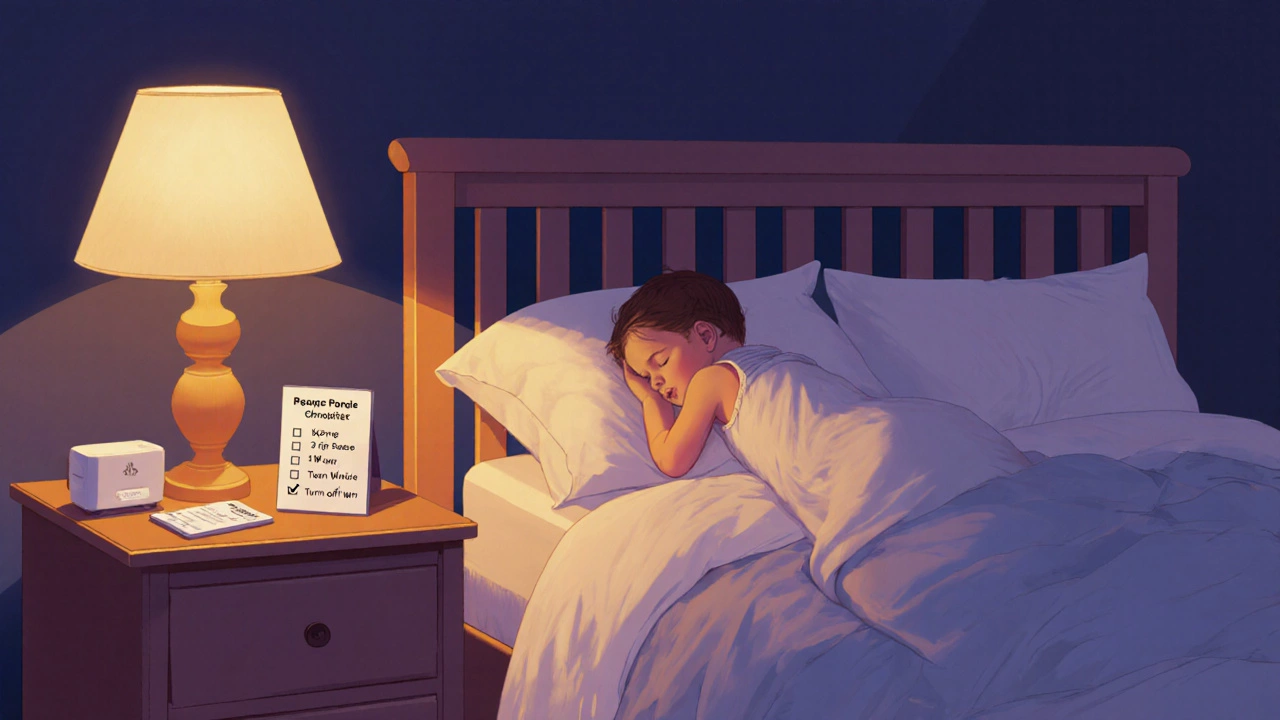
Alternatives to Consider
If the concerns feel too heavy, there are simpler options that still give peace of mind:
| Feature | Owlet Wearable | Standard Audio/Video |
|---|---|---|
| Heart‑rate & SpO₂ tracking | Yes (pulse oximeter) | No |
| RF emission | Bluetooth + Wi‑Fi (low‑power) | Wi‑Fi only (optional) |
| FDA regulation | Wellness product | None |
| Data storage | Cloud (encrypted) | Local (SD card) or cloud (optional) |
| Cost | ~$300-$350 | ~$100-$200 |
Both approaches have merits; the key is matching the device to your comfort level and your pediatrician’s advice.
Bottom Line for Parents
Owlet offers impressive data that can reassure a nervous parent, but it also introduces variables-RF exposure, false alarms, and regulatory gray zones-that many pediatricians flag as potential risks. By following a safety checklist, staying informed about the latest research, and keeping an open line with your child’s doctor, you can benefit from the technology while minimizing downsides.
Frequently Asked Questions
Does Owlet replace a regular pediatric check‑up?
No. Owlet is a wellness tool, not a medical device. It can spot trends, but a pediatrician’s exam remains essential for diagnosing health issues.
Is the Bluetooth signal from Owlet safe for newborns?
Bluetooth operates at very low power (≤1mW). Current evidence doesn’t show clear harm, but many doctors still recommend minimizing any RF source near a baby’s head.
Can the Owlet sock cause skin irritation?
If the sock is too tight or left on for too long, moisture can build up and irritate skin. Check for redness daily and replace the sock as recommended.
What does the FDA say about Owlet?
The FDA classifies Owlet as a low‑risk accessory. It emphasizes that the product is not intended to diagnose, treat, or prevent disease.
Should I use Owlet if my baby sleeps in a co‑sleeper?
Yes, but keep the base station out of the sleeping area and ensure the sock stays snug without restricting movement.


